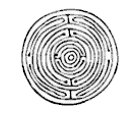Life and Death in the Colonies

Life and Death in the Colonies
In the later part of the seventeenth century, the production of sugar became the primary industry in the Caribbean. Sugar production demanded a large labour force; much larger than could be provided by indentured Europeans. Subsequently, millions of Africans were enslaved and brought to the Caribbean to work on the plantations. This led to the introduction of many new diseases, from once "remote" regions, into the Caribbean. The military personnel, who lived in barracks that were often built in low lying areas, were particularly affected by malaria and yellow fever. English Harbour, the site of the naval dockyard, became known as the graveyard of the Englishman and today, the tombstones and grave mounds stand in silent testament to an era when sugar was king.
Current research includes mapping of the cemeteries and recording information on the tombstones, and excavation of the former naval dockyard cemetery. This site has been lost to housing development. The excavated remains will be reburial in the military cemetery on Shirley Heights. Under the supervision of Dr. Tamara Varney , this project provides a rare opportunity for the training of students and to conduct a variety of analyses that are providing valuable insights into the life and times. Research is also being conducted at a number of barracks at Great Fort George on Monks Hill and Shirley Height's.
Sites: Great Fort George | Middle Ground | The Ridge at Shirley's Heights
Life and Death in the Colonies | Plantation Archaeology
Introduction | Archaic Age | Ceramic Age/Pre Columbian Saladoid | Post Saladoid | Historical Period | Common Myths
